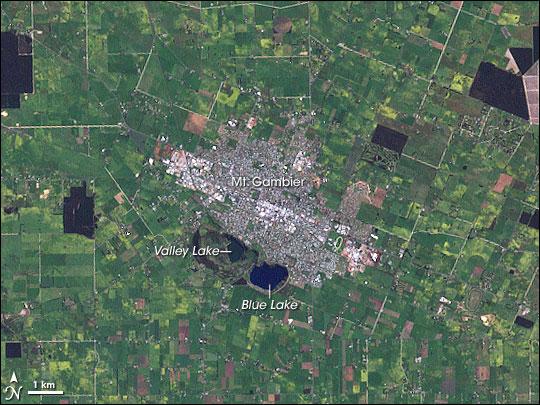
Volcanic Eruptions Long Overdue Down Under

Australia is often called the oldest continent on Earth because of the lack of historic geologic upheaval that marks other areas of the world. But its hushed tectonic activity doesn't mean Australia is asleep.
There are various volcanic clusters Down Under and new research suggests that some of the youngest volcanoes are long overdue for an eruption.
The Newer Volcanics Province (NVP), located in Western Victoria and southeastern South Australia, is a 5,800-square-mile (15,000 square kilometer) area that consists of hundreds of small cones, lava shields and craters that have been mapped in detail over the years. Research from the University of Melbourne's School of Earth Sciences and the Melbourne School of Engineering has found that volcanoes in the NVP were fairly active in the last 20,000 to 30,000 years, with an eruption frequency about every 2,000 years.
The volcanic area is what is termed monogenetic, meaning that when one of the volcanoes blows, it does so only once, so the older cones that have erupted aren't a worry; it is the youngest, new volcanoes that are a threat. The last eruption, at Mount Gambier in South Australia, was about 5,500 years ago, suggesting that the region is overdue for an eruption. [Related: The World's 5 Most Active Volcanoes]
Potential impacts
However, the new data is not conclusive, some scientists say. "Now we know they're a little younger but it's not a big data set to study," said Richard Wunderman, a geophysicist and editor of the Smithsonian's Bulletin of the Global Volcanism Network, who was not involved with the study. He noted that there is a lot that is unknown about volcanoes and their eruption patterns and only a small fraction of the world's volcanoes are actively monitored.
Most of the immediate area around the NVP is sparsely populated, but there is still a threat for even a small eruption to devastate local communities, study team member Bernie Joyce, associate professor at the University of Melbourne's School of Earth Sciences, said.
Sign up for the Live Science daily newsletter now
Get the world’s most fascinating discoveries delivered straight to your inbox.
"Among the hazards which may need to be prepared for in this closely settled region are the localized effects of cone building leading to lava flows which run downhill towards the coast," Joyce said in a statement.
Western Victoria is extremely dry, so not only could lava flows damage infrastructure and endanger lives, but they could be a major hazard on the dry plains during the sweltering summer months.
Ash plumes, something that has plagued planes in Australia and New Zealand — a plume recently traveled from a volcano in Chile — could also present a problem.
"In some cases rising magma can meet ground water and cause steam explosions. This can form wide craters and produce a lot of ash," Joyce said. "Depending on where the eruption occurs, ash can cause huge damage to people who are downwind, clogging up streams, road and rail transport and perhaps affecting local air travel."
The cause of the volcanic activity may be the movement of the Australian tectonic plate, which is moving north.
Planning ahead
Joyce said that the potential eruption risk underscores the need to have volcano emergency plans in place.
"It is important that the state government of Victoria, and the national government of Australia, be made aware of the possibility of future activity, and have some planning in place within the appropriate emergency organizations," Joyce said.
Wunderman suggested that unless there was a huge eruption, which it likely wouldn't be, the damage probably wouldn't be catastrophic in terms of the human toll. Other volcanoes of the same type are also in northeast Queensland and many remain undated, so more research is needed to assess the possibility of further activity.
The next step is to expand the monitoring of seismic activity. But even monitoring a volcano isn't a sure-fire way to know what is happening. "Even if it is being watched the next thing is it wiggles and jiggles and you say, well, we'll wait for more," Wunderman told OurAmazingPlanet. "It's not a perfect science."
Joyce presented the findings at the XXV International Congress of Geodesy and Geophysics in Melbourne, Australia.
This story was provided by OurAmazingPlanet, a sister site to LiveScience.









